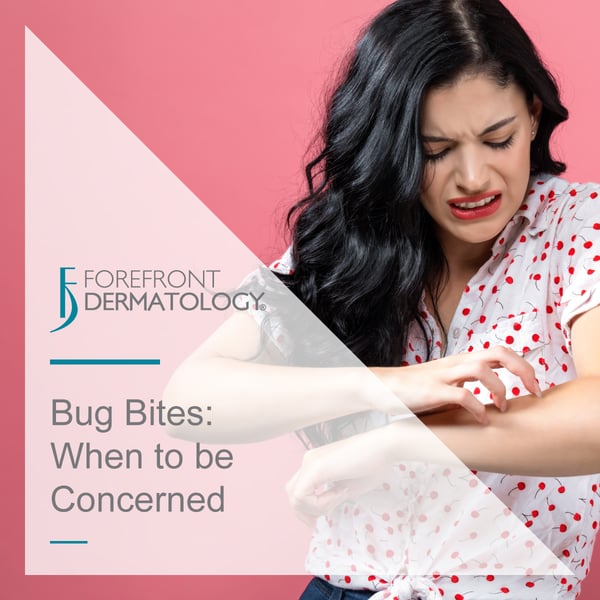
With summer comes bugs and with bugs comes bites. Not all bug bites are created equal with some requiring you to be more concerned than others. Dr. Giacomo Maggiolino, board-certified dermatologist with Forefront Dermatology put together a guide to the common bug bites you may encounter and when you should be concerned:
Bees / Wasp Stings
Bee and wasp stings typically cause immediate pain, redness, and swelling at the site of the sting. Sharp pain usually subsides in 15 minutes or so. Soreness is typical for a few days after. Remove the stinger and apply a cold pack to reduce swelling. Seek immediate attention if an allergic reaction occurs. This includes dizziness, difficulty breathing and hives.
Biting flies or gnats
Black flies, horse flies and deer flies make small cuts to the skin to feed on your blood. Some typically bite the body or legs, while others target the head and neck. Flies may bite repeatedly. Bites are painful and felt immediately. Swelling, itchiness, redness, and light bleeding are typical. Black fly bites can lead to swollen lymph nodes. These bites generally only require cleaning and a cold pack, if irritated. Seek immediate attention if an allergic reaction occurs. This includes dizziness, difficulty breathing and hives.
Mosquitoes
Mosquitoes bite to feed on blood, but the bites aren’t always felt when they occur. For some, blister-like bumps appear moments after being bitten, then a dark, itchy, bruise-like mark develops. For others, a small, itchy, red bump can develop about a day after being bit. Mosquito bites are best treated with a topical anti-itch cream or spray. Most mosquito bites go away after a few days without intervention. On rare occasions, however, mosquitoes are known to transmit disease, including West Nile virus. If you have body aches, diarrhea, fever, headaches, nausea, or other symptoms that appear within about two weeks of the bites and seem to be related, contact your doctor.
Spiders
Most spider bites are misidentified; they’re actually bites from other bugs or an unrelated skin irritation. Typical reactions to a true spider bite include swelling, redness, pain, and itching, though some might hardly be noticeable. Seek immediate medical attention if a spider bite leads to difficulty breathing or swelling in the face and neck. Proper diagnosis is more likely if you are able to take a picture or capture the spider that bit you, even if it’s no longer alive.
Ticks
When ticks bite, it isn’t typically painful, but it is noticeable. Ticks remain attached to the skin and attempt to crawl underneath. It’s normal for a small bump to develop where you’ve been bitten, but not a rash. Using tweezers, grab the tick as close to your skin as you can. Gently pull the tick straight out, making sure to pull out the entire insect. Do not jerk or twist, and avoid crushing the body. Some ticks are known to carry disease, but not every tick bite requires a trip to the doctor. Lyme disease symptoms usually show up three to 30 days after the tick bite. Contact your doctor if any of the following occurs:
- You can’t completely remove the tick that bit you.
- The tick has been under your skin for more than 24 hours.
- You develop flu-like symptoms, such as a fever, body aches or joint pain.
- You develop a rash, and the rash gets bigger or is shaped like a bulls-eye.
- The bite appears infected.
Help prevent bug bites this season by applying proper bug spray, wearing the proper clothing and by staying on paths and trails if outdoors. Check yourself, and your pets, for ticks after spending time outdoors and monitor your skin for any unusual changes.
Skin Struggles?
At Forefront Dermatology, we know that life is all about the moments when you don’t need us. That’s why we’re here for all the moments when you do. We offer comprehensive and compassionate care for all skin conditions and create customized treatment plans for all stages and ages – even the tiniest of patients! Find a dermatologist near me.





